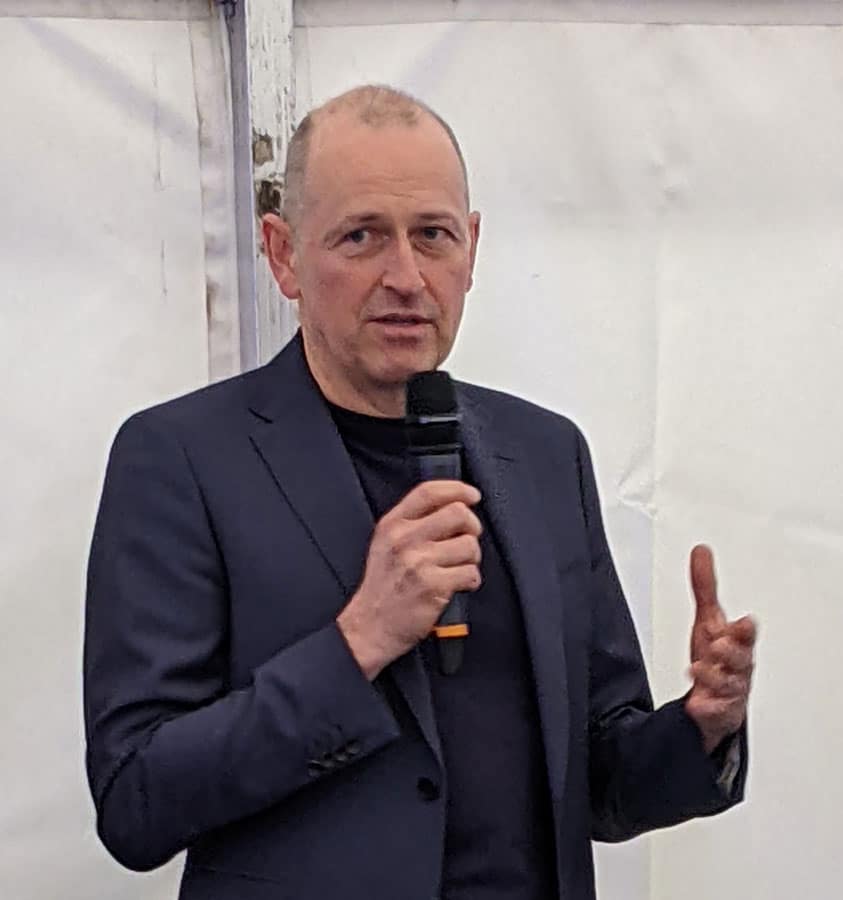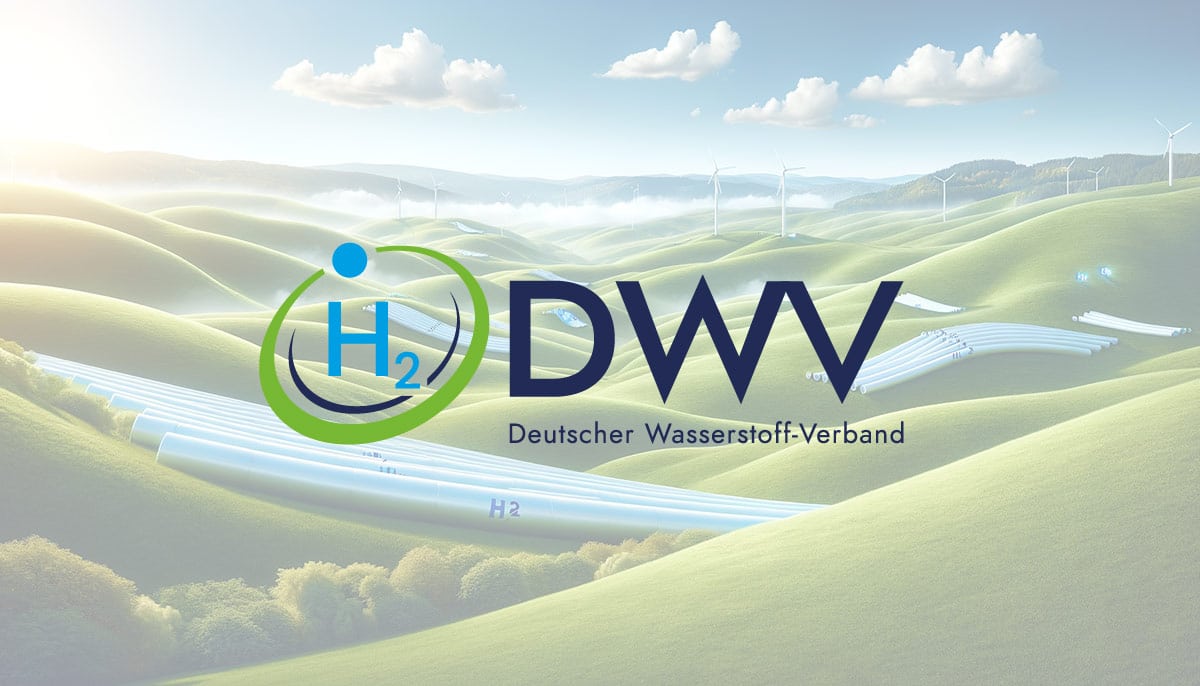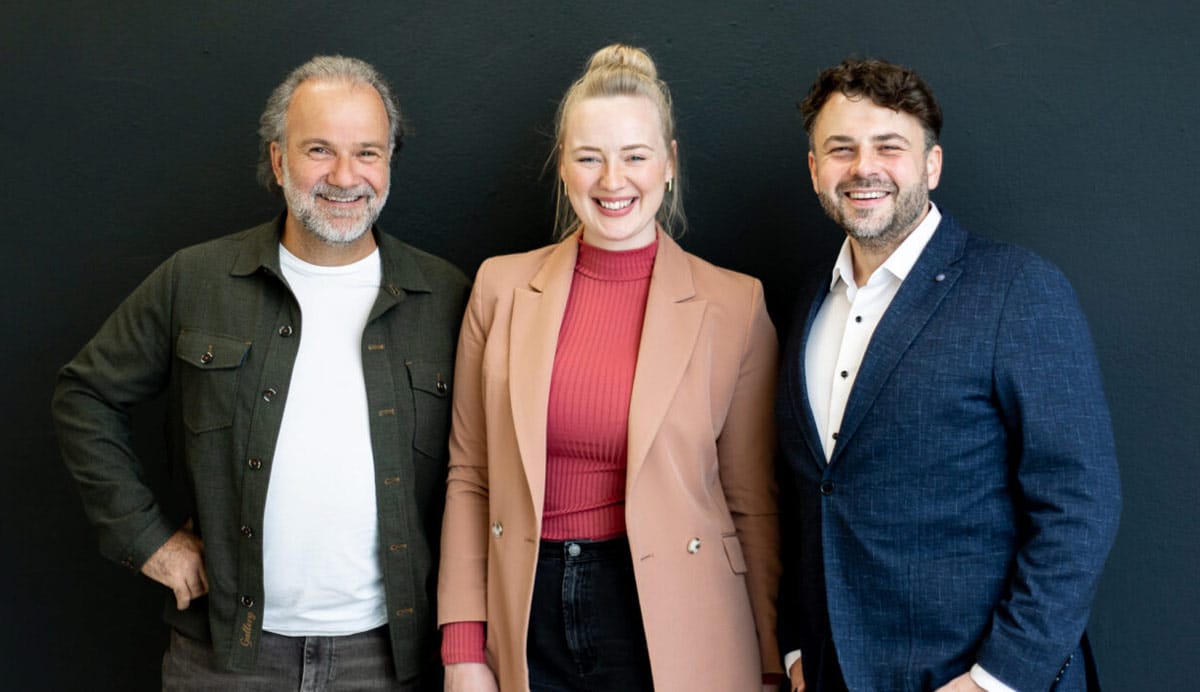Lars-Peter Thiesen, Opel’s head of deployment strategy for hydrogen and fuel cells, has been part of fuel cell powertrain development in Germany since the start and has played a decisive role in shaping its direction. Here, in conversation with H2-international, he calls for a technology-neutral attitude to e-mobility that takes account of both battery- and hydrogen-based forms of electric transportation and makes the case for a demand- and market-centered approach rather than one dictated by directives. He also sees hydrogen as the transportable storage medium of the future for renewables and accuses those who criticize its efficiency of a narrow perspective.
H2-international: Dr. Thiesen, could you describe the advantages of a fuel cell power system in three or four points?
Thiesen: A fuel cell vehicle is a zero-emission vehicle. It is electrically driven and the exhaust emits only water vapor. The second point is the refueling time. You can fill up the vehicles at 700 bar in three minutes. Plus, there is a standardized process that applies internationally, which isn’t the case for battery electric where there are vast differences. Then there’s the long range. And a fourth point that’s particularly relevant to our application in the Vivaro-e Hydrogen: We get the full cargo space compared with combustion engines or battery electric power units, which is no trivial matter when it comes to a fuel cell powertrain.
How do you achieve that?
Through what we call the “mid-power concept.” Here, the fuel cell is only around half as big as the maximum power output of the electric engine, with the benefit that the system fits under the hood. The hydrogen tanks located in the subframe replace the large traction battery of the battery electric power unit, and an additional smaller battery under the seats acts as a power buffer and energy reserve. Consequently neither the cargo space nor the utility of the vehicle is compromised.
And what are the disadvantages of a fuel cell power system?
Essentially we are facing three challenges: The first is refueling infrastructure. In Germany we have a globally unique system of about 100 fuel stations, but for customers who are completely reliant on hydrogen this fuel station network should be extended further. Secondly, the costs of vehicle components are still relatively high because the part volumes are still small. The key to success here is economies of scale in order to bring the costs down further. And then there is the third challenge in that we need sufficient green hydrogen in the medium term, in other words hydrogen that is produced in a sustainable, carbon-neutral way.
Why has the technology not caught on by now? You’ve been working in this area for more than 20 years. The technology seems to be fully developed or rather a calculable entity, am I right?
Yes, that’s right. We’ve overcome significant hurdles in terms of technical development. However that has taken time. Cold start capability is a case in point. The fuel cell power system produces water vapor that can freeze in subzero temperatures if it remains in the system. If you’d asked me in 1999, I’d have said: As an industry we’ll have it sorted in two to three years. In the end it took 10 years. As a result, Opel had the first fuel cell car that could be parked at an outdoor temperature of -20 °C without auxiliary units.
The other point is that the e-offensive has pushed hydrogen development into the background. In addition there has been an overwhelming need for consensus among industrial partners who each have their own interests, such as: Should the hydrogen that the fuel cell runs on be directly pumped in or made on board by reforming gasoline or methanol? How should the hydrogen be stored in the car: in liquefied or compressed form? After extensive testing of both technologies we have opted for compressed hydrogen. But then: What pressure level makes most sense: 350 or 700 bar? We were the first manufacturer to put a car with 700-bar technology on the road. That was a long-term multi-stakeholder project involving many different parties: other manufacturers, the oil and energy sector, system manufacturers and fuel station operators. Having gone on this long journey, I’m delighted that we are now able to offer the first serial-produced product – the Opel Vivaro-e Hydrogen – which is already being used by initial customers such as Miele.
You’ve been on this ride since the beginning. How was it possible to keep the fuel cell project moving forward?
In 1999 I sat down with the other manufacturers, the energy industry and the transportation ministry, and we agreed that hydrogen would be the fuel of the future. In 2002 we founded the Clean Energy Partnership, a demonstration project that ran in Berlin and other major cities in order to show policymakers, the public and customers that hydrogen is a feasible fuel for cars. We were able to convince the ministry of the benefits of adopting a holistic strategy. The National Organisation Hydrogen and Fuel Cell Technology (NOW) was established as a consequence in 2008 with the aim of not just promoting R&D projects, but also encouraging the ramping-up of the market with appropriate infrastructure. The next milestone was the launch of H2 Mobility in 2015 in order to solve the chicken-and-the-egg problem through the construction of at least 100 fuel stations. And finally in 2020 Germany’s national hydrogen strategy was rolled out with the aim of rapidly scaling green hydrogen.
Critics would counter that by saying you shouldn’t combust green hydrogen in private vehicles; rather you should put it to industrial use instead.
Quite true. It’s then also said that we need it primarily for certain branches of industry, for instance the steel industry. I completely get that too. Only in that case it might require a certain price per kilogram of EUR 1 or EUR 2. But much higher prices can be realized in the transport sector. Our stance is quite clear: You should leave it up to the market to decide which sector gets green hydrogen rather than dictating it via directives. That’s the only way things are going to work.
Is that realistic without state funding?
After 20 years we’ve now reached the most exciting point. We’re no longer at the demonstration stage but we haven’t quite reached mass production yet. We’re working on scale-up. The volumes are still relatively low and the components are still expensive. That’s why state support is still needed at this stage to ensure market entry. The funding, which entirely benefits the end customers, allows us to offer them attractive leasing rates.
But your fuel cell technology is competing with batteries, right? Or do you not see it as competition?
It’s not an either-or situation; you can have both. For customers and for us as a company, we need both – the technologies are complementary. Here’s one example: We have many customers with a business model that centers on the employee taking the car home, for instance installers or service technicians, as is currently the case at Miele which is using the Vivaro-e Hydrogen. Often these employees aren’t homeowners; they have no way of recharging. The car is parked in the street and the next morning they are off again. This is where you need the traditional fuel station model. What I’m trying to say is: If we want transportation to be 100 percent emission free in future, then there are a lot of customers who can’t be served by battery electric but for whom a fuel cell vehicle would be highly suitable. That’s why we need both technologies, because there are commercial sectors that can’t go about their business using battery electric vehicles.
So it’s batteries for private individuals and fuel cells for business?
As battery electric vehicles continue to proliferate, we are getting a clearer idea about how they are used – as well as their limitations. We know, for example, that 44 percent of Stellantis delivery van customers do not travel further than 300 kilometers (186 miles) in a day. Conversely this means, however, that 56 percent do travel further. And in those circumstances it’s important you don’t spend ages stopped at a charging station. Even if charging speeds can be increased in the foreseeable future, it’s still possible that lots of people will be there before me at the charging point. This is where a three-minute refill of hydrogen has a clear advantage – something we know very well from previous fuels.
When will fuel cells for cars be produced in significant numbers?
At the moment we are focusing initially on the key delivery van segment. A larger model will also be brought out in two years’ time. In addition, we intend to ramp up the production capacity from the current 1,000 vehicles to 10,000 vehicles in 2024. In terms of cars, we’ll have to see how the market and the situation develops.
The political mainstream at the moment favors battery electric mobility, not least with regard to the better efficiency it offers compared with hydrogen. How do you respond to your critics?
If I want to recharge at the same moment that a wind turbine happens to be turning, provided I have the time and the opportunity, it makes most sense to use that energy for battery electric transportation. In terms of practicality, there are, though, as I’ve already mentioned, sectors where it doesn’t work. What’s much more crucial is the bigger picture: In the future we’re going to need far more renewable energy because Europe and the wider world have set themselves the goal of becoming carbon neutral. But this energy won’t be produced on our doorstep; it’ll be produced where it is cheap to do so. For instance in Australia, where the generation costs for wind power are between one and two cents per kilowatt-hour. That’s well away from the place of consumption so it has to be transported somehow. It’s here that hydrogen will play an important role as a storage medium for renewables. And if I’ve first converted this energy into hydrogen using electrolysis to make it storable and transportable, then it makes perfect sense to use the hydrogen in that same form in fuel cell vehicles and not to convert it back into electricity to charge up a battery car.
This is why the efficiency discussion about the refueling and recharging of an individual vehicle is far too restricted. You have to see the big picture rather than just take a narrow view of things, like what the efficiency is on my doorstep. In this context it’s far too simplistic to rely on just one technology. We’ve developed the Vivaro-e Hydrogen because we recognize that it’s an appropriate choice for certain groups as well as for the future.
Author: Frank Wald
Image: Lars-Peter Thiesen, Source: Opel


























0 Comments